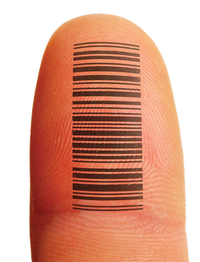Easy Codes
The pst-barcode package in LaTeX lets you generate a wide variety of professional-quality barcodes and QR codes for many different purposes.

Tom Grundy, 123RF.com
The pst-barcode package in LaTeX lets you generate a wide variety of professional-quality barcodes and QR codes for many different purposes.
Barcodes and 2D codes are a daily part of life. For a long time now, they have been responsible for shorter wait times in checkout lanes, because they make it possible to scan product prices instead of manually entering a price into a cash register. Ordering a book online is also much easier because the purchaser can simply scan in a barcode containing the ISBN. Such 2D codes have also begun to replace stamps and appear on travel tickets and movie tickets, for example. Information about tourist attractions can now be read into a smartphone or tablet as a QR code. WiFi connections also become easier when the access code comes in the form of a QR code. Professional contact information can be shared via a QR code.
The pst-barcode package in LaTeX [1] is a powerful tool that lets you easily and conveniently generate many different types of codes. Listing 1 shows a basic example of a LaTeX file with pst-barcode.
Once you have indicated the document class (line 1), you next enter the package in the preamble of the LaTeX document (line 2). Pst-barcode uses PSTricks [2]. This loads automatically, making all of its features available.
[...]